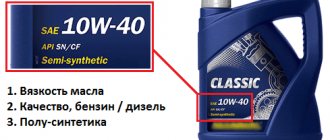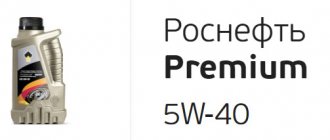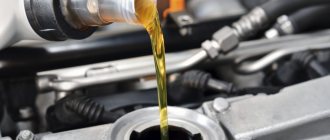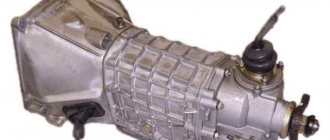Synthetic or semi-synthetic
The current trend is towards a wider viscosity range. Chemists have made the most significant steps in this direction in relation to the creation of synthetics, adding new components to them. For example, being the first to launch a synthetic lubricant on the market, it has been working with it and experimenting for over thirty years. A huge number of emerging competitors are also not asleep and are spending huge amounts of money on creating a new product with expanded capabilities. But there are few developers producing highly specialized synthetics, for example, for highly loaded diesel engines.
In addition to the “fives” - synthetics, there are similar semi-synthetics. Why not use it? Of course, you can also use liquid mineral water, add thickeners, a synthetic component with a modern set of additives - and you will get a completely standard semi-synthetic engine oil for winter, for example. However, it is known that its parameters will in any case be lower compared to synthetics. After all, the oil base plays an extremely important role, setting the physical and chemical base.
A well-known analogy can be traced with gasoline. There is a technology by which many additives are added in a homemade way to low-octane gasoline A-80 and AI-98 is obtained. But, after running on such fuel, the engine will soon require repairs: at a minimum, the injector will need to be flushed and the spark plugs replaced. After all, it is absolutely clear that high-quality gasoline of the highest quality will be obtained only through the use of appropriate technologies.
Viscosity
This characteristic is of paramount importance for a lubricating fluid. This parameter determines the maximum temperature for oil use. Therefore, which oil is better: 5W30 or 5W40 (in winter or summer) is determined precisely by this parameter. If the indicator is low, the lubricant should not be too viscous in order to cold start the engine with the starter and pump it through the pump. At high temperatures, the oil, on the contrary, should not have too low a viscosity so that it is possible to ensure a constant required level of pressure in the system and form a film that protects against friction around the parts.
So, based on viscosity, oils are divided into:
- Winter. With a low viscosity, the engine will start easily, but the lubricant will not work effectively at high temperatures.
- Summer. Cold starting will be problematic at temperatures below zero degrees, but with high viscosity the motor will be reliably and stably lubricated in warm and hot weather.
- All-season. When it’s cold outside, the oil exhibits the quality of a winter lubricant, and when it’s hot, it exhibits the quality of a summer lubricant.
All-season vehicles are becoming increasingly widespread, displacing the first two types, since now there is no longer a need to change the oil every time the season changes. At the same time, they show themselves to be more efficient and energy-saving. An example of such a lubricant is 5W40 oil (synthetic).
Main characteristics
All mentioned markings, among other things, take into account and describe the main performance indicators of the lubricant. Therefore, let’s look at them in more detail, which will help you figure out which oil is best to fill in a new engine.
Viscosity limit
Low lubricant viscosity often causes a decrease in pressure in internal combustion engine systems and also provokes the formation of leaks in car pipelines. On the other hand, excessive viscosity causes additional loads on power units, which reduces the working life of components and parts.
Therefore, when choosing a car oil, you should be guided by the viscosity parameters recommended by the car manufacturer of a particular vehicle model. Carefully ensure that the lubricant meets the specified standards, because even the slightest discrepancy in the letter or number of the marking can lead to malfunction of the power unit.
So, if the car is equipped with a pressure turbine, then the lubricant must be designed to work in turbocharged engines. Otherwise, the turbine resource sharply decreases and oil consumption increases.
An example of the viscosity of different oils at a temperature of -20
Cars equipped with particulate filters require the use of specialized lubricants that have a minimum content of impurities and sulfur. Other lubricants, burning during operation, very quickly clog the filters, disabling the entire system.
We also note the fact that it is impossible to use oil designed for use in modern high-speed power plants if the vehicle is equipped with a low-speed internal combustion engine. Otherwise, expect a drop in pressure in the lubrication system, and also be prepared for leaks in seals and/or seals.
Oil type
Quite often, discussions about what is a good engine oil come down to the choice between mineral and synthetic compounds. It would be a huge mistake to believe that synthetic oils are superior to their semi-synthetic and mineral counterparts in everything.
The thing is that each fuel and lubricants manufacturer processes base petroleum products using its own technology. Some focus on the most effective cleaning of raw materials, while others compensate for the shortcomings of the main components through the use of all kinds of additives.
The difference between mineral oil and synthetic oil
No specialist will undertake to say what is true and what is not. And finding out the true technical process for creating motor oil is very problematic. However, some technological solutions to create “advanced” lubricants often look, to put it mildly, dubious.
Other characteristics
Of course, other characteristics are also important for oil: detergent, anti-wear, anti-corrosion and antioxidant (additives are used for this). However, viscosity has one of the main meanings. Many modern additives increase the price. Therefore, you always need to pay attention to this parameter and choose the optimal balance between the properties of the lubricant and the future operating conditions of the engine.
The main requirement that should be followed when choosing is the requirements set by the vehicle manufacturer. They are given in the instruction manual. Typically, they not only contain information about the specific properties that should be inherent in the lubricating fluid used, but also offer specific brands of oils with recommendations for using them. Often the manual contains Shell oil (5W40, 5W30 or another type). At the same time, if your car is no longer new, and you have little information about its operation, then you can easily choose the brand for the engine or transmission yourself.
Oil classification
What is the best oil to put into a diesel engine? To fully answer this question, you need to understand the indicators of oils. After all, the use of oil largely depends on its performance characteristics.
The main indicator is the viscosity of the oil. This characteristic is determined according to the SAE classification. It looks something like this: 5W30. This entry indicates that the oil can be used in winter (W); its operation is permitted in the temperature range from – 25°C to 30°C. This is one of the main indicators. It must be taken into account when choosing oils taking into account seasonality. Do not forget that starting a diesel engine in winter is quite a difficult task, so do not purchase all-season oils like: 10W25. Most likely, starting a car with this indicator even in slight frost will be problematic.
Another important indicator that you must look at on the packaging is the API classification.
should
select options with the designation C. This indicates the suitability of the oil specifically for diesel units. Lubricant for gasoline engines is
marked
S. Sometimes you can find oils with the designation SF/CC
. This indicates the possibility of using such a product in any type of engine. In all cases, an additional letter is added to the designation C. This will indicate the level of demand of the motor.
In particular CA
and
CB
are no longer in production and are considered obsolete:
- CE
- this lubricant is intended for turbocharged engines that constantly operate in high load areas; - CF
- this oil is designed taking into account the requirements of diesel units for simple passenger cars; - CI
– for diesel engines, but with reduced emissions, adjusted to the strict requirements of environmentalists; - CJ
is the most modern type of oil, created for engines operating with the minimum possible impact on the environment.
Consider the characteristics of your engine when choosing oils.
For example, most of the cars produced after 2009 are CJ-oriented. Another indicator that it is advisable to take into account is the ACEA
.
Here, preference should be given to oils marked B, with a number from 1 to 3 added to the letter. The higher this indicator, the more powerful the lubricant is intended for engines. When choosing oil for your diesel engine, consider operating temperature conditions. Therefore, the main selection criterion should be the SAE indicator. Also pay attention to the other symbols.
1999 SAE Standard
What do those mysterious letters SAE mean? The abbreviation is translated from English as “Society of Automobile Engineers”. This is an international standard that viscosity must comply with. For example, in 1999 the standard requirements were as follows.
Based on the kinematic viscosity of the oil, compliance with a specific season is determined. It is calculated at low speeds from twenty to one hundred degrees and separately at one hundred degrees.
Starting properties are revealed through resistance when starting a cold engine and the ability to gain speed. Depending on the viscosity and class, they are determined at temperatures from ten to thirty-five degrees below zero and high shear rates (105 s-1), that is, the conditions for working in crankshaft bearings during a cold start are considered.
Pumpability determines the rate of passage of lubricant to the rubbing parts during a cold start, as well as the possible risk of engine breakdown during a cold start due to rotation of the liners. The indicator is considered at negative temperatures from fifteen to forty degrees and at low shear rates (10 s-1). Under these conditions, the lubricant spreads in the pan to the oil receiver when starting a cold engine.
Viscosity at high temperatures reveals the real indicator when operating highly loaded engines in the warm season. Thus, anti-wear characteristics, losses due to friction and the impact on engine efficiency are visible. It is fixed at high shear rates (106s-1). Under these conditions, the crankshaft bearings operate under high temperatures and loads.
What kind of oil should I put in my engine for the winter?
Currently, the Solar market offers a huge number of different brands of automobile oils.
SAE standard
The ease of pumping and lubrication of parts depends on the viscosity. On the cans you can see symbols such as: 10w-40, 5w-40, etc. "W". Indicates that the oil is intended for use at low temperatures.
The larger the number , in addition, it is thick. 5W is designed for temperatures up to 25 degrees, at 15w. Down to minus 15 degrees.
- SAE 20W-40. From 10 to 45;
- SAE 15W-40. From 15 to 45;
- SAE 10W-40. From 20 to 35;
- SAE 10W-30. From 20 to 30;
- SAE 5W-40. From 25 to 35;
- SAE 5W-30. From 25 to 20;
- SAE 0W-40. From 30 to 35;
- SAE 0W-30. 30-20
Therefore, for Russia, located in temperate latitudes, 5W-40. An excellent choice for diesel fuel in winter. Applications can be submitted all year round. Therefore, when choosing, take into account regional characteristics and temperature differences.
API standard
American standard that distinguishes its classification. Divides the liquid into 2 categories:
- S. For gasoline cars;
- C. For diesel vehicles.
As for diesel engines, the best option would be the associated CF class . This is also great for turbodiesel.
Energy efficient motor oil
The purpose of this engine fluid is to save diesel fuel. In addition, this oil improves the environmental friendliness of the engine. Reduced fuel consumption occurs due to reduced friction of parts.
At high temperatures, about 150 degrees, ordinary oil is quite viscous, which ensures a reliable oil film. A decrease in viscosity under such conditions leads to a decrease in friction during operation, in accordance with the load, and a decrease in fuel consumption.
As the engine temperature increases, the thickness of the oil film decreases, the engine runs easier, but the protection of parts deteriorates.
Remember that energy saving oil should not be used in vehicles not recommended by the manufacturer. The engine must be structurally adapted to this. Besides, old diesel cars are definitely not worth it .
Useful tips when choosing oil in winter
As everyone knows, at low temperatures the engine is very demanding on the quality and composition of the oil. The lower the viscosity, the better. In winter, many car engines experience oil starvation.
When starting, the thick oil does not have time to pump through the engine, so it runs almost dry. As a result, a load is placed not only on the engine, but also on the battery. In winter, batteries quickly lose their capacity.
Diesel oil is often divided into winter, summer and all-weather . Winter engine oil is thinner, which makes it easier to start the engine in cold weather. In summer it has a more viscous composition and provides the necessary lubrication of the internal parts. Air weather is widely used because it is more versatile.
If you often drive a car and travel more than 20 thousand km per year, you can use a seasonal replacement. Fill in winter oil before winter and in summer. Spring.
What oil to pour into a diesel engine in winter if you have a new car? In this case, if it is under warranty, pour what is sold at car dealerships. If you want to choose one yourself, choose the one that best meets API and SAE standards.
It's also worth noting that you pay per kilometer driven after an oil change. Late oil changes can cause engine damage.
SAE classification
This is an SAE specification that determines the performance of an oil under various conditions. There are currently six winter classes and five summer classes. Winter ones can be easily identified by the presence of the letter W (“winter”, which means “winter” in English). The higher the viscosity, the higher the numerical index will be.
Winter viscosity is designated 0W, 5W,10W,15W, 20W. 25W.
Summer - 20, 30, 40, 50.
Let's look at 5W40 oil as an example.
Its characteristics are as follows. Class - viscosity 5W. As is clear, it can be used in winter, that is, it is this indicator that determines how easy it will be to start the engine in the cold. Thus, in order to understand what kind of oil to fill in in winter, you need to pay attention to this indicator.
The number “40” reveals summer performance, that is, the ability of the engine to operate at high temperatures.
If, as in our example, there is a designation for both one and the other classes (that is, motor oil 5W40, as well as 5W30), this indicates the all-season nature of its use.
Winter oil
Previously, the question of which oil was best to use for the winter was not even a question for car enthusiasts. The answer was clear - winter. According to the SAE classification, it was designated by the letter W after the digital value (winter). The packaging indicated: SAE 0W or SAE 5W, 10W, 15W, 20W. The number before W told the buyer what the lowest temperature the oil could withstand without harming the power unit. Before winter, the motorist must change the oil with one suitable for the weather conditions of his region, regardless of how long he drove with the previous lubricant. Winter oil did not thicken at low temperatures, but became too thin if the air temperature rose.
How to choose a winter class
When choosing a viscosity, first of all follow the instructions of the car manufacturer. If there are none, follow the general recommendations.
When choosing the best oil for winter, you need to take into account the conditions under which the vehicle will be operated.
Then problems with starting in winter and negative consequences for the engine (for example, rapid wear and jamming during startup, which can happen in conditions of oil starvation) can be avoided, regardless of whether you have 5W30 or 5W40 for the winter. It is necessary to understand that when starting the engine, even if this does not happen in severe frost, but when there is a positive mark on the thermometer, it takes time for the oil pump to pump through the lubrication system so that the liquid gets into all the rubbing parts and channels. Until this time, the engine operates in conditions of lack of oil. Therefore, friction and wear are significantly increased. The more the lubricant can maintain fluidity at low temperatures, the better protection for the motor will be provided.
How to choose an all-season vehicle
Winter properties are reflected on the left side, and summer properties on the right. Thus, when wondering which oil is better - 5W30 or 5W40 - in winter, you need to pay attention only to the indicator on the left, and in this case it is the same.
Therefore, you should pay attention to the difference in summer mode and select the appropriate option depending on the operating conditions of the vehicle.
Scope and features
The scope of application of modern lubricants for internal combustion engines is determined by their properties. Therefore, in order to determine which oil is best to pour into a diesel or gasoline engine, you need to know its cleaning characteristics, as well as its parameters for preventing wear and oxidation. For this purpose, special oil classification systems have been created that are used all over the world:
- SAE - divides all motor lubricants into 5 five summer (marked by numbers) and six winter (marked by the letter “W”) classes. “Vsesezonaka” in this case has a double (numbers + letters) designation.
- API - separates motor lubricants according to their intended purpose. Oils for diesel engines receive the symbol “C”, and gasoline ones, respectively, “S”. Universal products that can be used in any internal combustion engine are distinguished by the markings of the two above-mentioned categories.
- ACEA is a system that includes 3 classes and 11 categories of motor oils. Class “A/B” is aimed at use in passenger cars with gasoline and diesel engines, “C” implies compatibility with exhaust system neutralizers, and “E” is designed for trucks equipped with diesel power plants.
- ILSAC is another international standard for motor oils, which includes three classes of lubricants used in engines running on light fuel (GF-1/2/3).
Viscosity-temperature properties
Ensuring that the engine starts without heating, freely pumping oil through the system and, as a result, stable lubrication of all rubbing parts at the highest possible loads and ambient temperature depends on this indicator.
Even in a temperate climate, the change in winter temperature before the greatest warming is up to one hundred and ninety degrees. Therefore, seasonal oils must be changed depending on the time of year. However, with the advent of all-season oils (these include, for example, 5W40 and 5W30 motor oil), the problem was resolved. Thanks to their additives, they are able to exhibit the necessary properties at different temperatures. That is, with a negative value they are similar to winter oils, and with high positive values they are similar to summer oils.
Diesel engine oil: standards
Many car enthusiasts are passionate about choosing the best for their iron horses, but some are not even aware that there are special standards by which the purpose of the oil is determined.
SAE - viscosity classification
This standard is international; the manufacturer will, first of all, recommend the choice of oil according to it.
Oils divided according to this classification are:
- Winter;
- Summer;
- All-season.
There are special designations for “winter” oils:
- 5W,
- 10W,
- 15W.
Where W is the performance of the oil at low temperatures, and the numbers indicate this temperature. To understand at how many degrees the oil can be used, you need to subtract 35 from the number in front of W. 10 - 35 = -25, where -25 is the minimum operating temperature.
All-season has additional numbers after W-10, W-40, where 40 is the maximum summer temperature outside.
API fuel standard
It was developed at the American Petroleum Institute. Motor oils are divided according to this classification, taking into account their operating characteristics.
Within this standard there are two large groups:
- S - oil for gasoline cars;
- C - for diesel engines.
Further, oils classified according to this system receive different values. For cars with naturally aspirated and turbocharged diesel engines, oil with the letter designation CF is suitable.
ACEA standard
This classification was developed by car manufacturers from Europe. To navigate the choice of oil according to this standard, you need to know the letter designations.
Categories of automotive lubricants according to the ACEA standard:
- A/B - for passenger cars with gasoline (A) and diesel (B) engines.
- Category C for gasoline and light diesel engines with built-in catalytic aftertreatment systems.
- And category E for diesel trucks.
Next, the oils are assigned a number, depending on the engine structure and performance properties.
Additives
Additives do not greatly increase viscosity at low temperatures, but greatly increase them at high temperatures, when the number of macropolymer molecules increases significantly. In all-season vehicles (which include 5W30 lubricant and 5W40 oil), the characteristics consist in the temporary possibility of changing its viscosity, also relative to the shear rate. As the speed decreases, it increases, and as the speed increases, it decreases.
This property is most pronounced at low temperatures, but it also remains at high temperatures, which has good consequences for the engine: low viscosity when the engine is cold facilitates descent, and when it is warm, energy loss due to friction is reduced, which saves fuel.
The basic concept of viscosity and its types.
To put it in simple language, without going into scientific terminology, the viscosity of motor oil is the ability to maintain fluidity, while at the same time ensuring that a sufficient film of lubricant remains on the parts inside the power unit, correctly distributed between the rubbing parts.
The lower the viscosity, the more fluid the substance. At the same time, the oil must have stable characteristics when used in a fairly wide range of “walking” temperatures, which during intensive driving reaches 150ºC. If the engine is cold, the oil naturally thickens: in this case, it is important that it remains liquid even at subzero temperatures to ensure engine starting.
The main task of the consumable is to prevent dry friction of moving components inside the engine and maintain a minimum friction force with maximum tightness of the working cylinders.
Kinematic and dynamic viscosity of oil.
In turn, there are two types of concepts of oil viscosity - kinematic and dynamic.
The conditioned kinematic viscosity of the oil (KVM) is responsible for the thickness of the lubricant and is calculated at standard and maximum operating temperatures. Most often, testing takes place at operating temperatures of forty and one hundred degrees Celsius.
Then the KVM helps you calculate the calculator. Based on the CVM parameters, the viscosity index of the motor oil is determined, which reflects the degree of CVM change relative to temperature changes.
The higher the index, the better the lubricant composition and the less the dependence of oil viscosity on temperature. For a high-quality lubricant, the oil viscosity index is more than two hundred units of measurement; as a rule, these are all-season consumables.
The characteristic responsible for the resistance of a substance when one of its layers is displaced relative to another of its layers is called the dynamic viscosity of the oil (measured in centipoise).
The loss of engine energy during operation depends on it - the higher the degree of viscosity, the thicker the film on the internal parts and the more reliable the lubrication, but at the same time the power loss to overcome fluid friction increases.
To optimally determine oil viscosity, the international classification of motor oils by viscosity according to SAE (US Society of Automotive Engineers) is recognized throughout the world.
Let's look at how to determine the viscosity of motor oil according to SAE .
According to international SAE standards, there is a table for determining the viscosity of motor oil, which shows the parameters for safe engine operation for all viscosity classes. Below is a table of motor oil viscosity based on temperature.
The classification of oils involves division into three categories:
- Winter ones (located at the top left of the table) - have a low viscosity for easy cold starts at sub-zero temperatures, but are not suitable for high-quality lubrication of the internal parts of the engine in the summer season. Their viscosity must correspond to pumpability (no more than 6000 centipoise) and meet the required CVM and crankability.
- Summer ones (located at the top right of the table) - have a high viscosity, which guarantees reliable lubrication of parts, but will not allow for a safe cold start in frost;
- All-season (located in the lower part in the middle) - it is not difficult to guess that these oils are in greater consumer demand, since they have mixed certification, are used in a wide range of thermal conditions, and meet both winter and summer operating parameters. These products are able to change depending on the season and provide the lubrication needed at the moment, they do not have to be changed with the change of season, they are the most energy efficient and therefore more convenient.
Marking, trying to decipher
First of all, on the packaging we look for the abbreviation SAE; next to it you can see the letter “w” and one or two more numbers. So, the letter “w” (from the English “winter”) denotes winter ones if there is only one number in front, for example, 10w or 25w. What do the numbers mean?
The numbers help calculate the negative temperature for safe starting of an internal combustion engine. To calculate it, you need to subtract the number indicated on the label from 40. Therefore, the lower the digital value, the lower the temperature the engine starts easier.
To mark summer class oils, only a digital designation is used, for example, SAE30,40,50. Here the number indicates the possibility of use in a certain temperature regime (but does not at all indicate the ambient temperature).
Also, the letter “w” is used to designate a mixed specification of all-season oils, i.e. combining summer and winter indicators. In this case, the defining marking will be one number before “w”, indicating the winter class, then a hyphen and a second number defining summer operational parameters.
For example, 5w-40 or 20w -50. The first digit, as in winter oil, indicates the cold start temperature, and the second indicates the possibility of summer mode. Regarding the degree of viscosity, it is worth adding that the wider the gap between the numbers characterizing summer and winter parameters, the more often replacement will have to be made.











